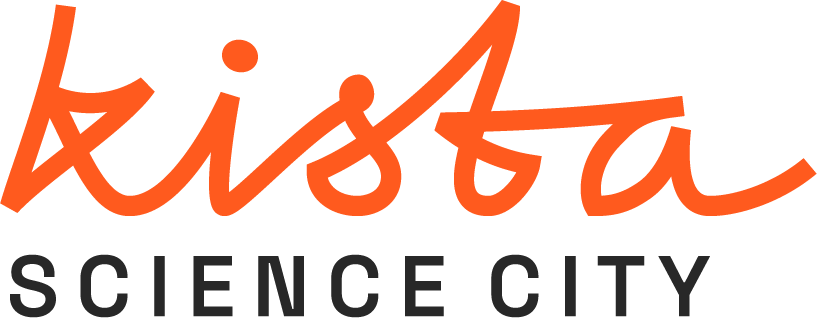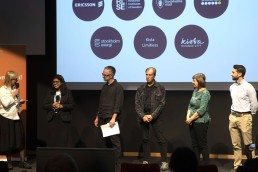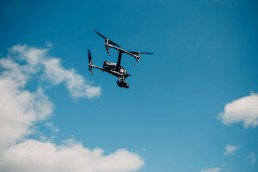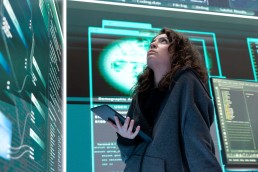How do we create alignment and shared visions in multidisciplinary projects — and truly understand how others are affected? The answer often lies in the mix of perspectives. When researchers, city planners and companies work side by side, tools that might otherwise remain abstract become solutions that guide real decisions.
That was the starting point for Digital Vision Kista, a three-year initiative that explored how digital twins can support data-driven cooperation and decision-making across city organisations. By visualising complex systems and connecting different data sources, the project aimed to help stakeholders look beyond their own organisational scope and engage in discussions with others.
The method
Digital Vision Kista was part of the national Smart Built Environment programme, which supports digital transformation and innovation in urban development. The project followed the Triple Helix model — bringing together the public sector, industry and academia to combine their expertise. Partners included the City of Stockholm, RISE, Ericsson, Kista Science City, Kista Limitless, Stockholm Exergi and S:t Erik Kommunikation, together with universities and students.
Unlike many initiatives, Digital Vision Kista began not with a technical solution, but with the people and processes it aimed to support. The project was built around the idea of the digital twin as a collaboration tool — a way to build shared understanding and enable data-driven dialogue between departments and organisations. By starting from everyday work and existing tasks, the project could explore how a digital twin might genuinely help colleagues coordinate decisions in their daily operations.
This setup made it possible to combine technical expertise with real-world needs. As a result, the work could move forward in ways that were meaningful for both those developing the technology and those applying it in practice — from city departments to utilities and emergency services.
The process
The project started by identifying concrete needs and challenges through workshops and interviews. From these insights, the project defined a set of user journeys — examples of how digital twins could create value in everyday work.
To explore these user journeys in practice, an interactive 5D model of Kista was developed. The model brought together data on traffic flows, stormwater and energy use, making it possible to visualise how areas changed over time — from ongoing projects to planned developments — and to explore alternative scenarios for how the district could evolve in the future. By combining real datasets in one visual platform, it offered a shared reference point for dialogue and decision-making, helping different actors coordinate earlier in the process. The platform evolved iteratively as new needs were identified, gradually forming an early prototype for future collaboration and data-driven decision-making.
Building on this foundation, the project focused on eight main user journeys that could demonstrate the practical value of digital twins. Examples include coordinating underground infrastructure projects, simulating energy use in new housing areas, analysing urban resource flows (Reflow), supporting emergency services and creating safer, more attractive public spaces. A series of articles describing these user journeys in more detail is being published at digivis.se and smartbuilt.se.
“For many people, the single biggest use case is simply getting a shared picture of what’s happening in their area,” says Uwe Stephan, project manager at the City of Stockholm. “They want to know what the city has planned for nearby streets and public spaces, what other projects are underway close by, and how longer-term plans might affect them. Whether you work in a city department or a private company, having that shared picture makes it easier to coordinate and act at the right time.”
The ecosystem
Digital Vision Kista drew on the full strength of Kista’s innovation environment. Data from an intelligent traffic management testbed was integrated into the models, while collaborations with universities gave students the opportunity to experiment with live digital twin environments. This setup allowed research pilots, industrial projects and testbeds to intersect, creating synergies that would not have been possible in isolation.
One insight from the project was how prototype development can spark engagement even beyond the immediate partners. For example, a parking optimisation pilot at Ericsson attracted interest from stakeholders outside the project, highlighting the value of sharing progress openly and inviting others into the process. This kind of transparency helps build trust, social acceptance and broader participation.
By linking education, research and applied projects, Digital Vision Kista showed how an ecosystem approach can turn separate initiatives into shared progress.
Next steps
Although Digital Vision Kista has ended, the collaborations continue. New partners and funding are being sought to expand the work and carry the user journeys forward.
Building on what has been achieved, the next phase will focus on strengthening data-driven decision-making in complex urban environments. Through continued prototyping and testing, the partners aim to explore real challenges more deeply, align perspectives across organisational boundaries, and turn shared insight into practical progress.
“We now want to bring the results back into Stockholm’s work and scale up what fits our way of operating,” says Uwe Stephan. “That also means continuing to build together — data-driven transformation isn’t something any single organisation can achieve alone.”
For those involved, the value lies not only in what has been built, but in how it was built: through many disciplines meeting around the same table. That is how complex technologies move from concept to real-world use — and why projects like this matter for the future of our cities.
To learn more or explore potential collaborations, contact lucas.uhlen@kista.com.
Related Articles
December 9, 2025
Understanding online risks: Lisa Kaati’s research at DSV in Kista
The boundaries of conflict are shifting. Today, national security isn’t just…




